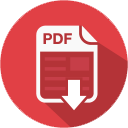A remarkable manuscript containing volume 2 of the work (henceforth “Lot 68”) is currently offered for sale by the UK auctioneer Dreweatts.
The prominent Twelver Shiʿi scholar and poet, Muḥammad b. al-Ḥusayn “al-Sharīf al-Raḍī” (d. 406 /1015), author of a monumental, partly preserved Qurʾān commentary in ten volumes, Ḥaqāʾiq al-taʾwīl fī mutashābih al-tanzīl, and compiler of the renowned anthology of homilies, speeches and letters at-tributed to Imām ʿAlī b. Abī Ṭālib (d. 40/661), Nahj al-balāgha, also composed a comprehensive, and largely unprecedented book on the metaphors in the Qurʾān, entitled Talkhīṣ al-bayān ʿan majāzāt al-Qurʾā n. A remarkable manuscript containing volume 2 of the work (henceforth “Lot 68”) is currently offered for sale by the UK auctioneer Dreweatts. The description in the Dreweatts web-based catalogue2 reads as follows:
162 leaves (plus one contemporary and 3 later endleaves), complete in alternating quires of 8 and 12 leaves with a bifolium at the end to complete the text, the second volume of the text only, single column of 11-12 lines in sepia naskh hand of the author al-Sharif al-Radi himself, title on recto of first leaf, colophon at end of text in same hand, …
The auctioneer’s conclusion that the codex constitutes an autograph is compelling. The volume ends with an authorial colophon (fig. 6) in which al-Sharīfal-Raḍī relates the dates of the commencement of the composition (Thursday, 20 Shaʿbān 401[/29 March 1011]) and its completion (Sunday, 13 Shawwāl 401[/17 May 1011]). That the codex has both a title page and a final colophon confirms its completeness. At the same time, since the auctioneer’s website includes only a few sample pages, it cannot be established precisely where in the work volume 2 begins.
Confirmation that the codex dates back to the late tenth or first half of the eleventh century CE—but not that it is a holograph—is also provided by a C14 test (by CIRAM Science for Art Cultural Heritage of Martillac, France and New York, their report reference 0415-OA-98R-4 carried out in 2015, with them extracting the sample of paper from the book them-selves: strip of paper from blank lower edge of fol. 10), as well as a report on the antiquity of the paper […] The C14 analysis establishes a date of 986-1048 AD with a probability of 79.1%, and the paper stock is characteristically Persian and of the twelfth century or before (the extreme rarity of comparative eleventh-century manuscripts from this region forcing the dating parameters to be set as twelfth-century or before).
Additional confirmation that the codex constitutes a holograph is provided on the titlepage (fig. 1), which was written down by one al-Ḥasan b. Ḥāmid al-Warrāq, the equivalent of a publisher’s impressum. He remarks that the work is in the hand of the author. Moreover, the titlepage also contains a 192SchmidtkeShii Studies Review 4 (2020) 190-199statement by the renowned grammarian and adīb Abū l-Ḥasan ʿAlī b. ʿĪsā b. al-Faraj b. Ṣāliḥ al-Rabaʿī al-Zuhayrī al-Naḥwī (b. 328/939, d. 420/1029), obviously an admirer of al-Sharīf al-Raḍī.
Bibliographic Information
Title: For Sale to the Highest Bidder: A Precious Shiʿi Manuscript from the Early Eleventh Century
Author: Sabine Schmidtke
Published in: Shii Studies Review 4 (2020)
Language: English
Length: 9 pages
 Ijtihad Network Being Wise and Faithful Muslim in the Contemporary World
Ijtihad Network Being Wise and Faithful Muslim in the Contemporary World

